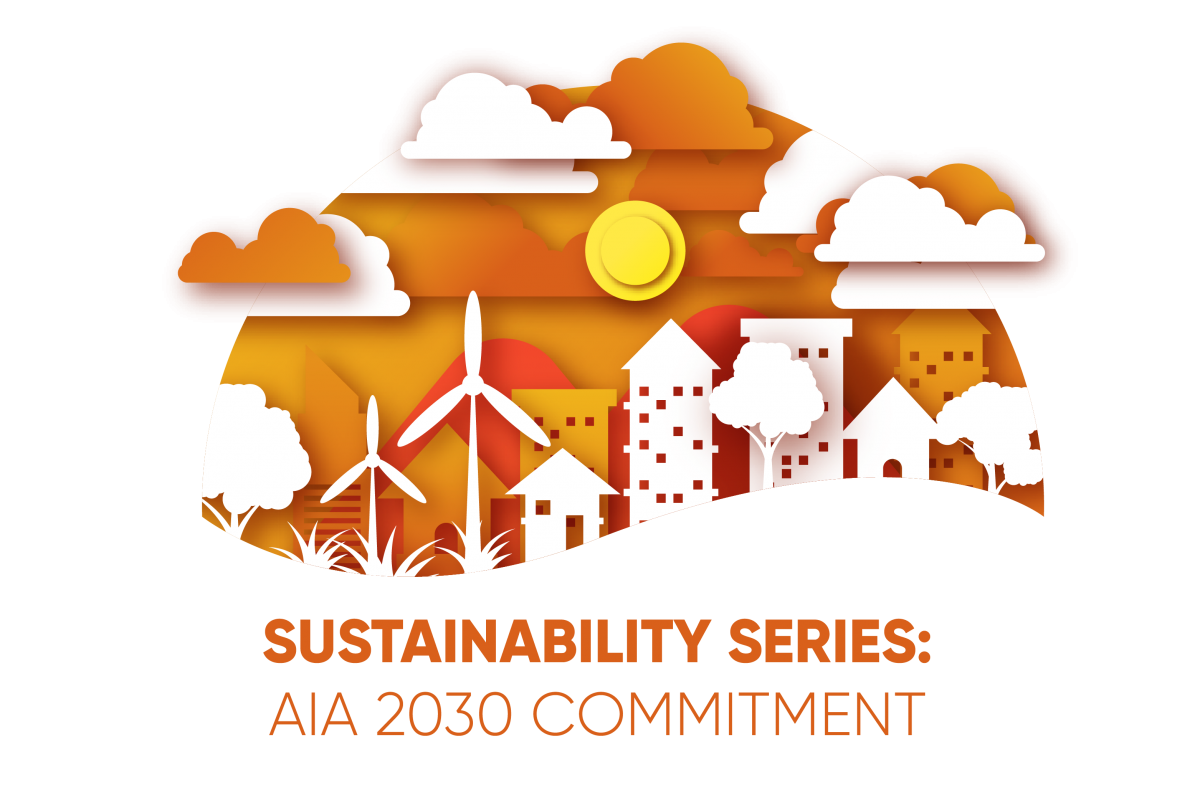BY: DONNA MARION, AIA, LEED AP BD+C
The Mission
The mission of the AIA 2030 Commitment is to support the 2030 Challenge and transform the practice of architecture in a way that is holistic, firm-wide, project based, and data-driven. By prioritizing energy performance, participating firms can more easily work toward carbon neutral buildings, developments and major renovations by 2030. [Source]
Collaboration Over Competition
The AIA 2030 Commitment is a vehicle for architects to pursue carbon neutral design by providing guidance and resources that support this goal. Architects and firms who join get the benefit of support for project-based, data-driven design practice.
Information on building energy performance, a key factor in carbon neutral design, is shared through an anonymized database called the Design Data Exchange (DDx). Industry-wide reports are regularly issued that share statistics on building performance and best practices, and this knowledge base benefits the larger community.
Show Me Your Model
Submitting project data to the DDx requires the project to have an energy model, so any project with energy modeling can be included. The larger pursuit of carbon neutral design can be applied to any project with the goal of measuring and minimizing its carbon footprint. Interiors-only projects can also be reported if they include lighting design.
Manage What You Measure
40% of energy consumption in the U.S. is by buildings, so architects play a key role in mitigating climate change and emissions resulting from energy use. You “manage what you measure”, and the 2030 Commitment is about measuring and minimizing building energy use in the pursuit of carbon neutral design. The results are tangible: in 2019, 2030 participants reported energy savings equivalent to the carbon emissions that would be sequestered by 26.4 million acres of forest in one year.
It’s a Lifestyle Change
The AIA 2030 Commitment isn’t a rating system or set of design principles; it is a public commitment to design more energy efficient buildings and contribute to the knowledge base of the design community as we refine current best practices. It is a commitment to prioritize energy efficiency and use energy modeling as the vehicle for measuring building performance in the design stage.
Donna Marion, AIA, LEED AP BD+C
Donna sees architecture as the balance of tension between technical needs and design possibilities; one that has the unique ability to benefit the common good. She is a LEED Accredited Professional and is leading Studio SW’s in-house sustainable design initiatives from their Santa Fe office.




